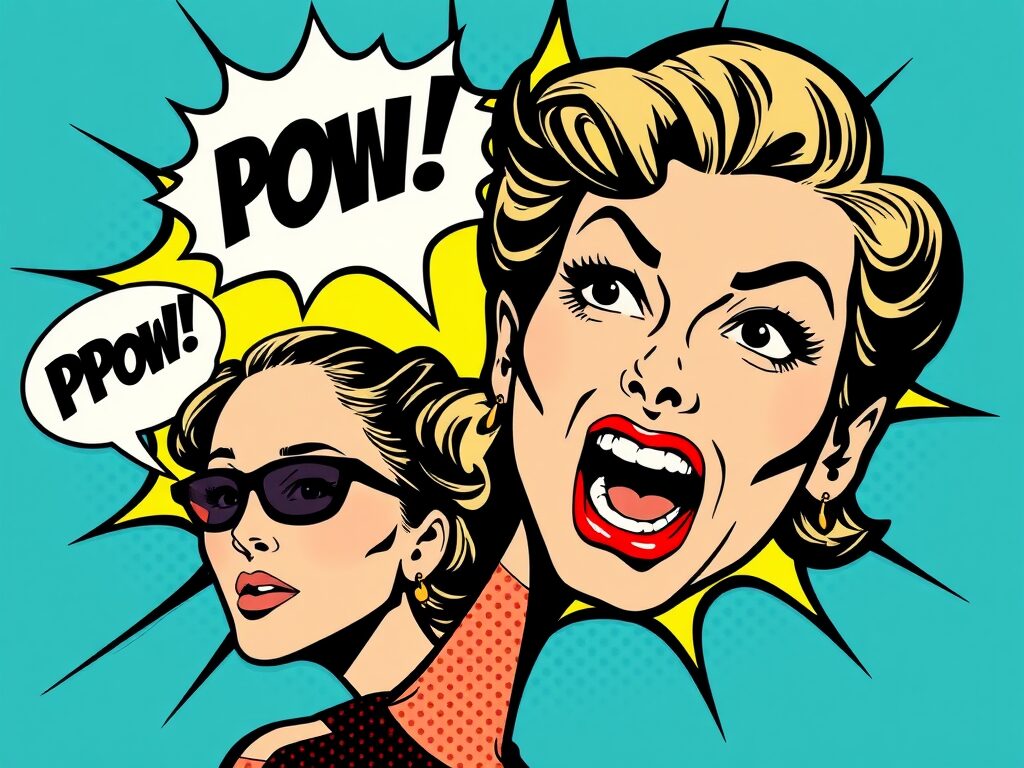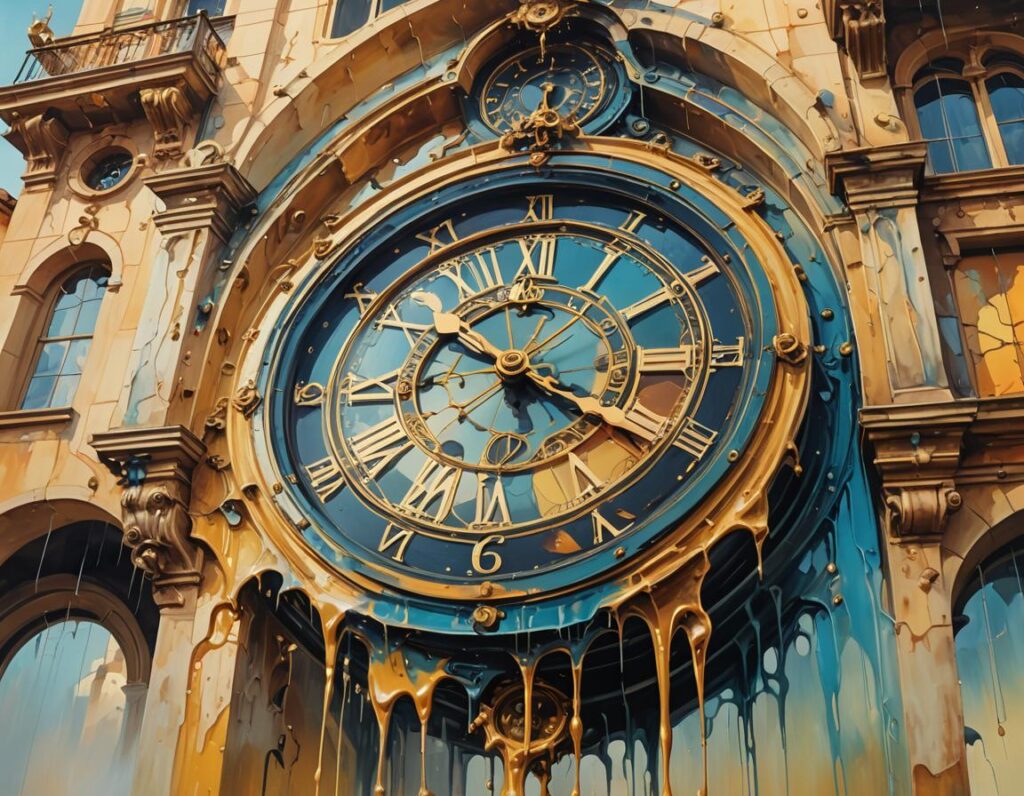Pop Art burst onto the art scene in the 1950s and 60s like a splash of bright paint, completely changing how we think about art. Unlike traditional painting that focused on landscapes or serious portraits, Pop Art celebrated the colorful world of advertising, comics, and consumer products that surrounded everyday people. The defining Pop Art characteristics include bright, eye-catching colors, bold outlines, and images of common objects we see every day – from soup cans to comic strips. Artists like Andy Warhol and Roy Lichtenstein wanted to blur the line between “high art” in museums and the popular culture that regular people enjoyed.
Key Points:
- Pop Art emerged in the 1950s-60s as a reaction against abstract expressionism
- Characterized by bright colors, bold lines, and everyday objects
- Celebrated mass culture and consumerism rather than rejecting it
- Major artists include Andy Warhol, Roy Lichtenstein, and Claes Oldenburg
- Developed simultaneously but differently in Britain and America
- Continues to influence advertising, design, and contemporary art today
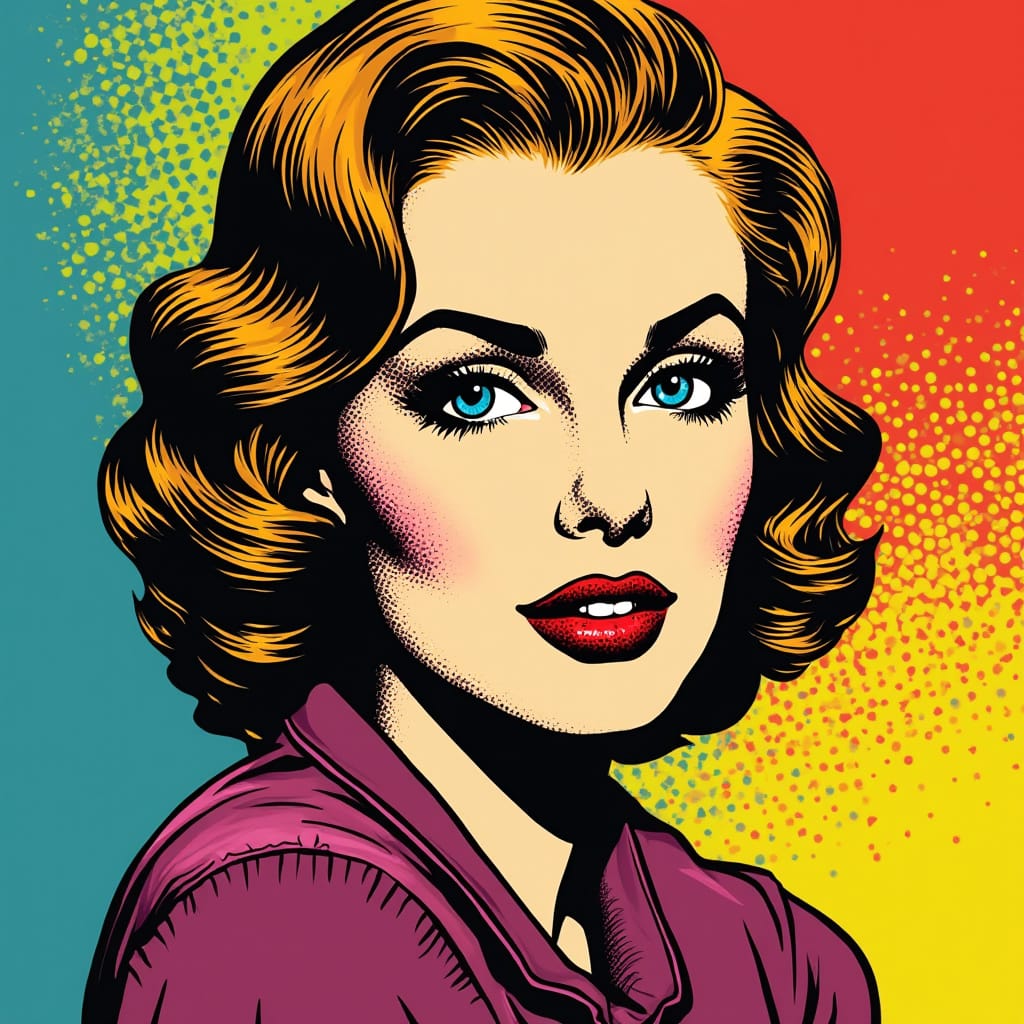
What Are the Main Pop Art Characteristics?
Pop Art deliberately broke from the serious, emotional approach of previous art movements. Instead, it embraced a playful, accessible style that anyone could understand. Here are the defining characteristics that make Pop Art immediately recognizable:
Bright, Vivid Colors
Pop artists loved using vibrant, unnatural colors that grab your attention. They often chose:
- Primary colors (red, blue, yellow)
- Neon and fluorescent hues
- Flat areas of unblended color
- Complementary color combinations that create visual tension
This color approach was directly influenced by advertising and packaging design. Unlike the subtle color gradations in traditional painting, Pop Art embraced the in-your-face brightness of commercial imagery.
Bold, Defined Lines
Clean, thick outlines are a hallmark of Pop Art. These bold lines:
- Define shapes clearly
- Create a graphic, commercial look
- Resemble printing techniques
- Help images stand out dramatically
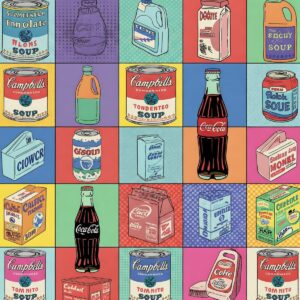
Roy Lichtenstein, in particular, became famous for his thick black outlines that mimicked comic book illustrations. This technique gave his paintings an immediately recognizable style that anyone familiar with comics would understand.
Everyday Objects as Subject Matter
Perhaps the most revolutionary Pop Art characteristic was its focus on ordinary objects and consumer products. Artists elevated items like:
- Campbell’s soup cans (Andy Warhol)
- Coca-Cola bottles
- Comic book panels
- Advertisements
- Celebrity photographs
- Household appliances
As artist Richard Hamilton described it, Pop Art was “popular, transient, expendable, low-cost, mass-produced, young, witty, sexy, gimmicky, glamorous, and Big Business.”
“Once you ‘got’ Pop, you could never see a sign the same way again. And once you thought Pop, you could never see America the same way again.”
Andy Warhol
Commercial Printing Techniques
Unlike traditional painting that valued the unique brushstroke, Pop artists often embraced mechanical reproduction methods:
| Technique | How It Was Used | Famous Examples |
|---|---|---|
| Screen printing | Creating multiple identical images | Warhol’s Marilyn Monroe series |
| Ben-Day dots | Simulating commercial printing | Lichtenstein’s comic paintings |
| Collage | Combining found images | Richard Hamilton’s “Just what is it…” |
| Photography | Direct appropriation | Warhol’s celebrity portraits |
These techniques challenged the idea that art had to be one-of-a-kind to be valuable. By using methods from advertising and mass media, Pop artists commented on how modern life was increasingly filled with reproduced images.
The Origins and Influence of Pop Art
Pop Art developed almost simultaneously in Britain and America, though with slightly different emphases. In Britain, artists like Richard Hamilton and Eduardo Paolozzi viewed American consumer culture from a distance, often with a sense of fascination and irony. Their approach to Pop Art reflected the influence of earlier artists while creating something entirely new.
In America, artists like Andy Warhol, Roy Lichtenstein, and Claes Oldenburg were immersed in the consumer culture they depicted. Their work often blurred the line between celebration and critique of American consumerism. As you can see in the vibrant legacy of Pop Art, this movement continues to shape our visual culture today.
Cultural Context of Pop Art
Pop Art emerged during a time of significant change:
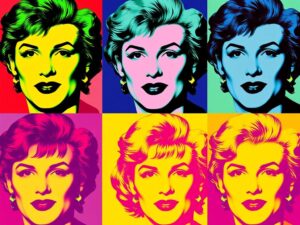
- Post-war economic boom
- Rise of television and mass advertising
- Growth of consumer culture
- Mass production of goods
- Celebrity worship
- Cold War tensions
These social conditions created the perfect environment for art that questioned the relationship between high culture and mass appeal. By bringing everyday objects into galleries, Pop artists challenged viewers to reconsider what deserves artistic attention.
Famous Pop Artists and Their Techniques
While many artists contributed to the Pop Art movement, several masters defined its core characteristics:
Andy Warhol
The most famous Pop artist, Warhol began as a commercial illustrator before revolutionizing fine art. His contributions include:
- Screen-printed multiples of consumer products
- Celebrity portraits in non-naturalistic colors
- Exploration of mass production in art
- Blurring boundaries between art and business
Warhol’s studio, called “The Factory,” further emphasized the connection between art and industrial production. His work fundamentally changed how we think about art’s uniqueness and value.
Roy Lichtenstein
Lichtenstein adapted comic book imagery into large-scale paintings, featuring:
- Speech bubbles and text
- Ben-Day dots (the small colored dots used in printing)
- Bold black outlines
- Dramatic narratives and emotions
His technique painstakingly recreated the mechanical appearance of commercial printing by hand, adding an ironic touch to his seemingly mass-produced images.
Claes Oldenburg
Oldenburg focused on creating soft sculptures and oversized versions of everyday objects:
- Giant hamburgers and ice cream cones
- Soft fabric versions of hard objects
- Monumental public sculptures of ordinary items
By changing the scale and materials of common objects, Oldenburg made viewers see familiar things in entirely new ways.
The Legacy of Pop Art Characteristics
The influence of Pop Art extends well beyond the art world. Its characteristics have shaped:
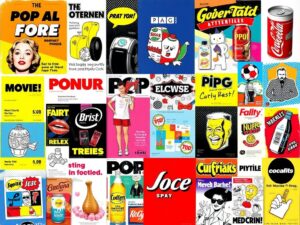
- Graphic design and advertising
- Fashion and textile design
- Music videos and album covers
- Web design and digital aesthetics
- Product packaging
Today’s digital designers continue to employ the bright color palette techniques pioneered by Pop artists. The movement’s influence is so pervasive that we often don’t recognize when we’re looking at Pop Art-inspired visuals.
Creating Your Own Pop Art
If you’re inspired by Pop Art characteristics, you can try these techniques in your own artwork:
- Choose an everyday object or celebrity image as your starting point
- Simplify shapes and outlines
- Apply flat, bright colors without shading
- Add bold black outlines
- Incorporate commercial printing elements like dots or stripes
- Consider repeating your image with color variations
For more guidance on developing your artistic skills, check out how to find your painting style and explore different painting techniques for beginners.
Contemporary artists continue to build on Pop Art characteristics, combining them with new media and concerns. As you explore famous artists and their styles, you’ll see how Pop Art’s legacy continues to evolve and inspire new generations.
Conclusion
The defining Pop Art characteristics of bright colors, bold lines, and everyday objects revolutionized the art world by erasing boundaries between high culture and popular entertainment. Through their celebration of consumer culture, artists like Warhol and Lichtenstein created works that remain instantly recognizable and influential decades later. Whether you’re analyzing a classic Warhol print or noticing Pop Art influences in today’s advertising, understanding these key characteristics helps you appreciate how this movement transformed our visual landscape. The legacy of Pop Art continues to thrive in our image-saturated world, reminding us that art can be both intellectually stimulating and accessible to everyone.
FAQ: Pop Art Characteristics
What are the main characteristics of Pop Art?
The main characteristics of Pop Art include bright, vibrant colors; bold, defined outlines; everyday objects as subject matter; commercial printing techniques; repetition of images; and references to popular culture, advertising, and mass media.
When did the Pop Art movement begin?
Pop Art emerged in the mid-1950s in Britain and the late 1950s in America, reaching its peak popularity in the 1960s. It developed as a reaction against the emotional intensity of Abstract Expressionism and embraced the imagery of consumer culture.
Who are the most famous Pop Art artists?
The most famous Pop Art artists include Andy Warhol, Roy Lichtenstein, Claes Oldenburg, Richard Hamilton, Jasper Johns, Robert Rauschenberg, David Hockney, and Keith Haring. Each artist brought their own unique approach to the movement.
How did Pop Art challenge traditional art?
Pop Art challenged traditional art by elevating everyday objects and commercial imagery to fine art status, embracing mechanical reproduction techniques instead of unique brushwork, using bold commercial colors rather than subtle palettes, and blurring the distinction between high culture and mass entertainment.
Is Pop Art still relevant today?
Yes, Pop Art remains extremely relevant today. Its visual language continues to influence advertising, graphic design, fashion, and contemporary art. Many current artists still work with Pop Art characteristics while addressing modern concerns like digital culture, social media, and global consumerism.

